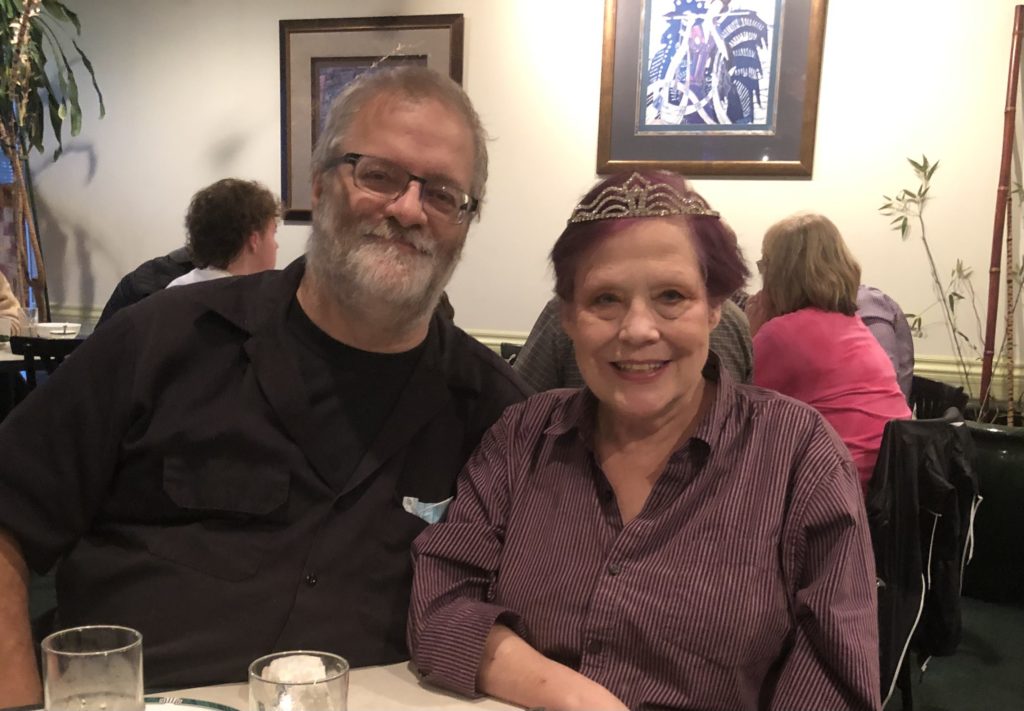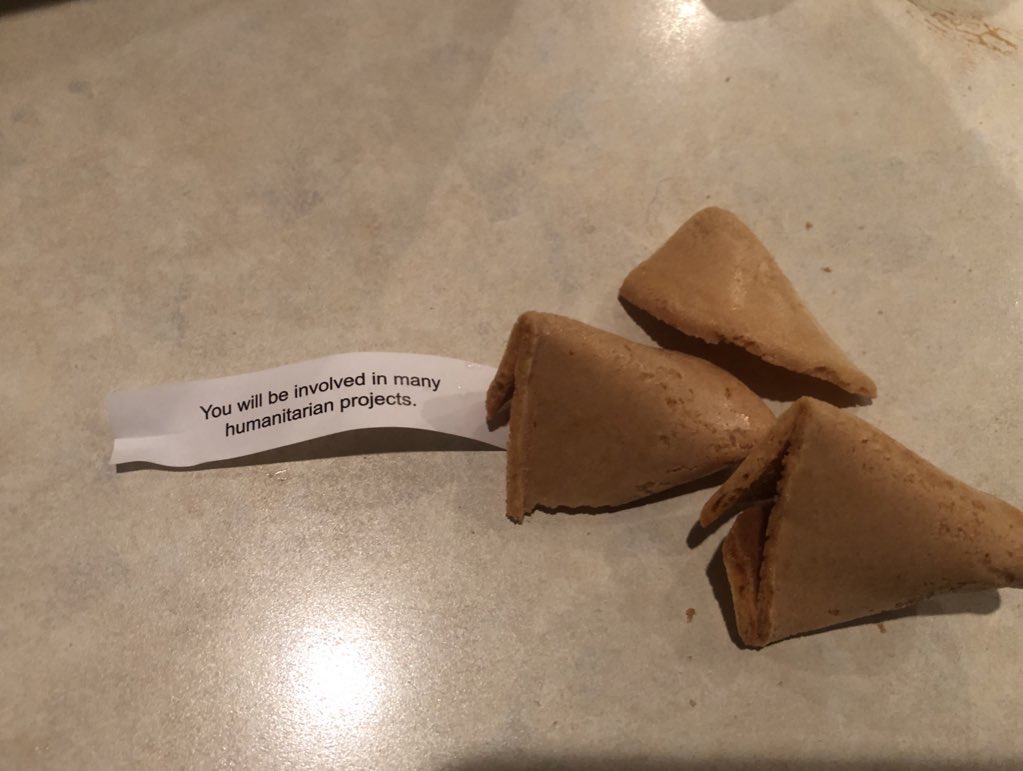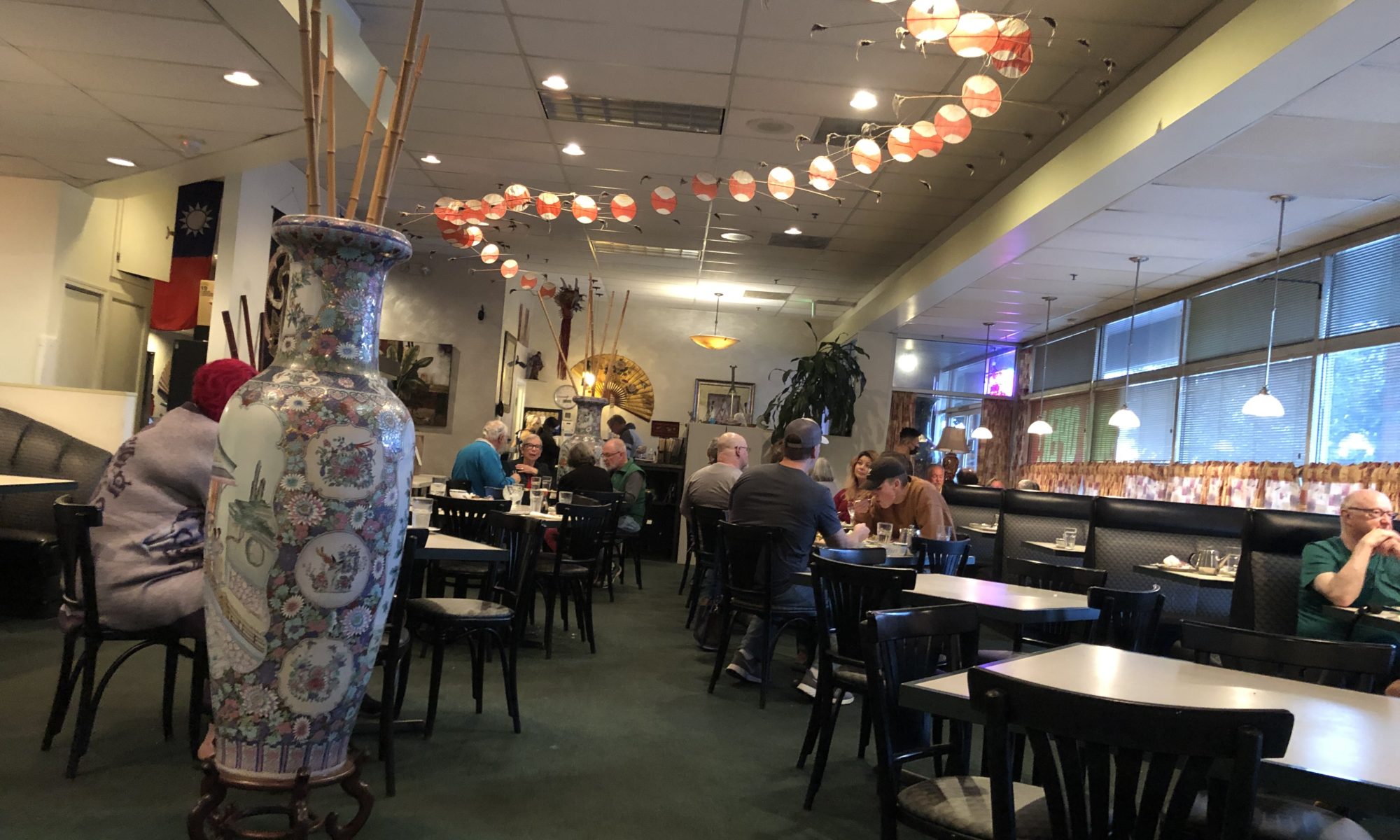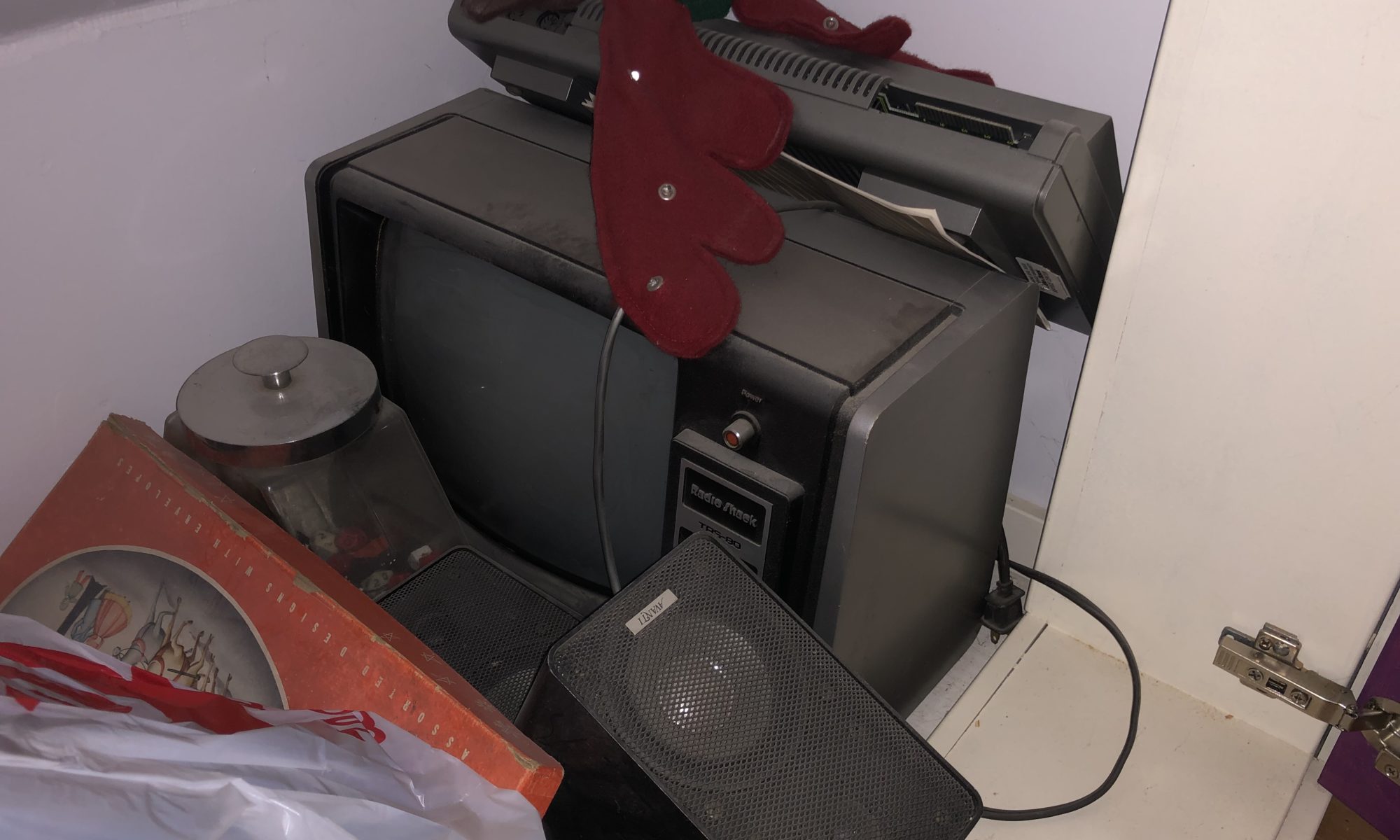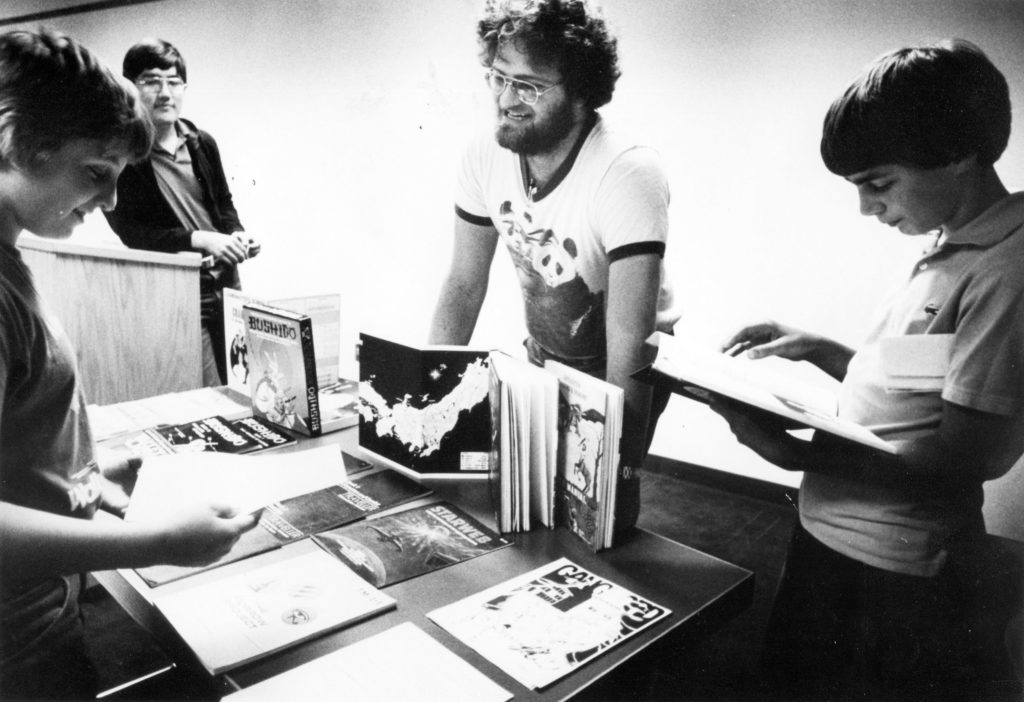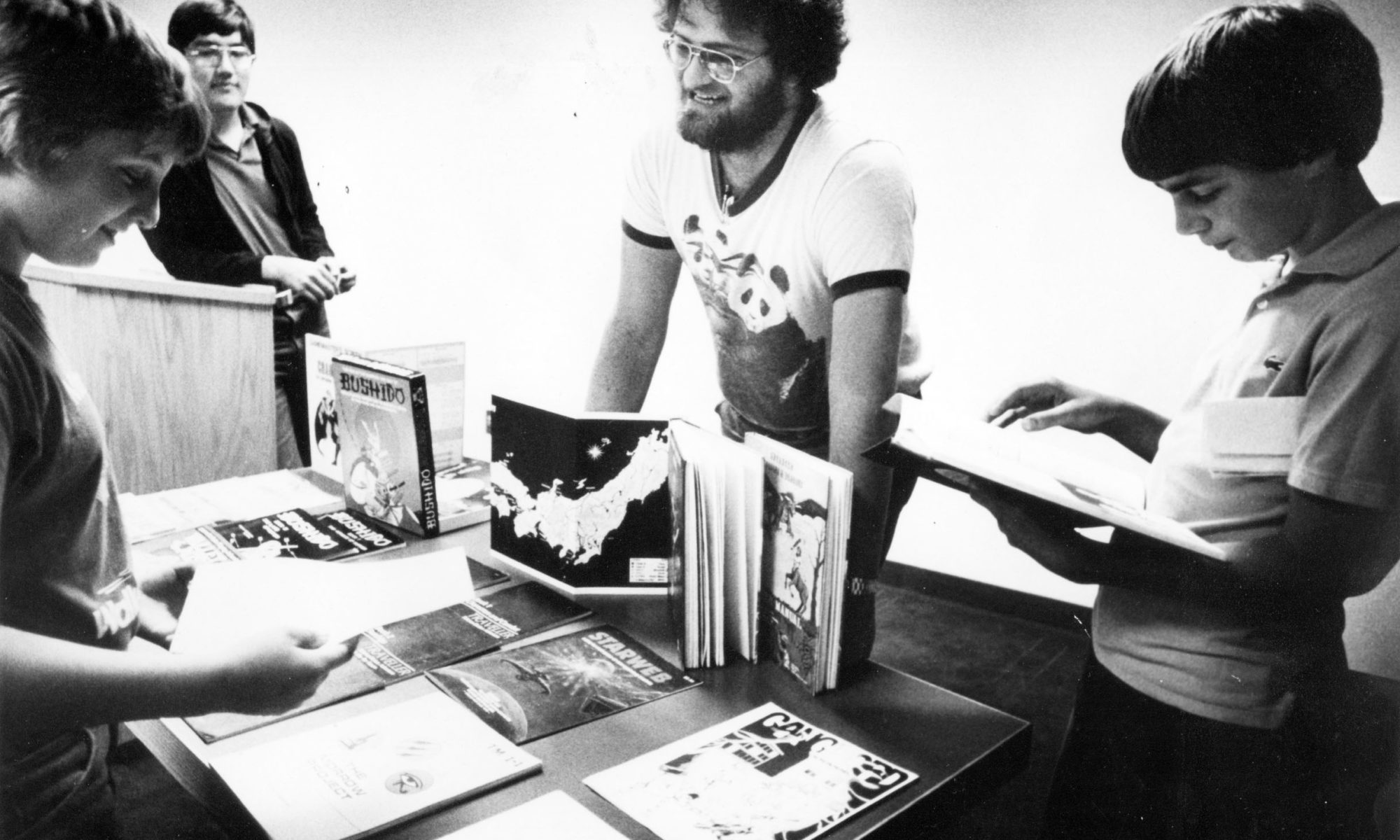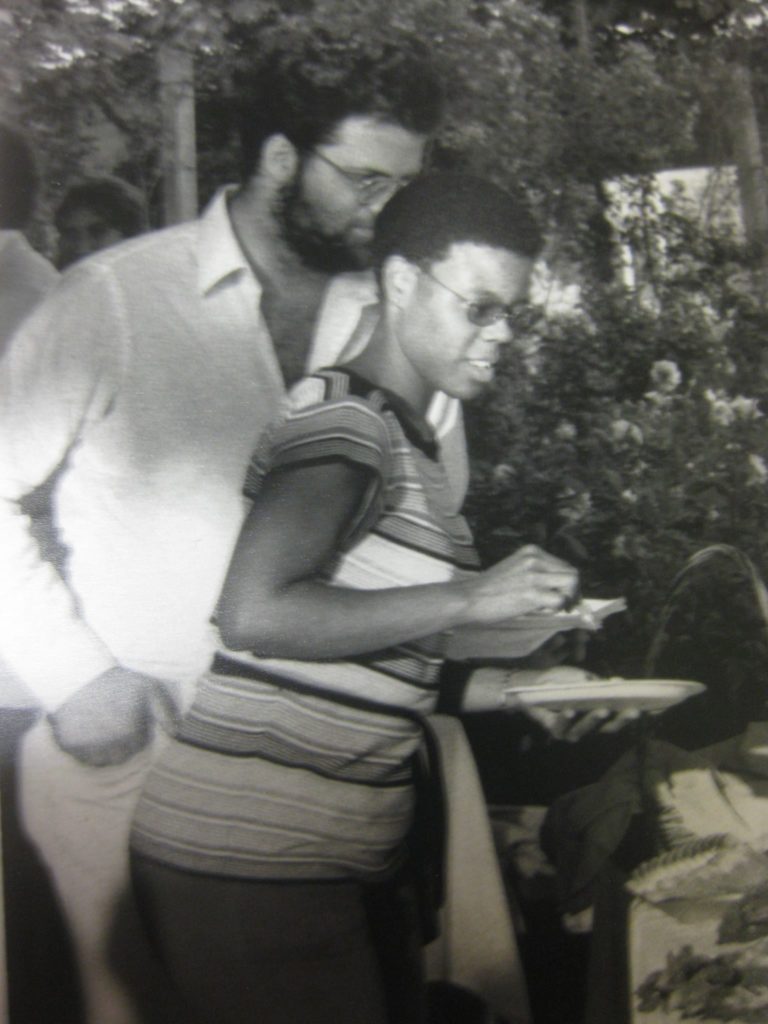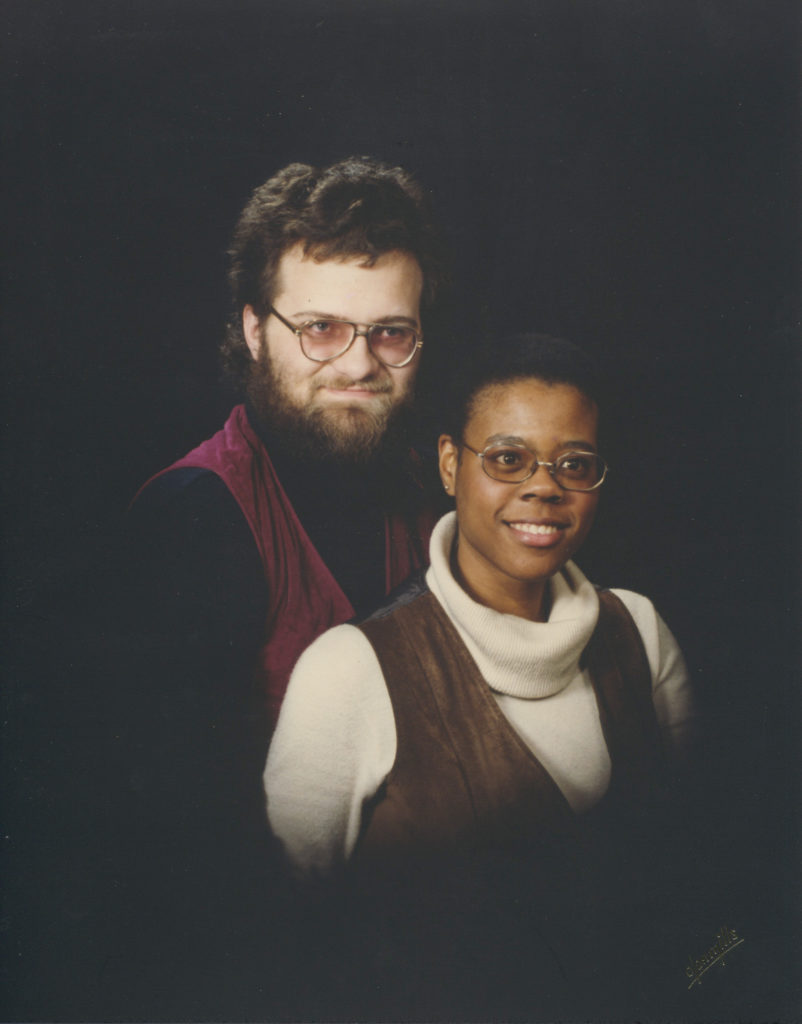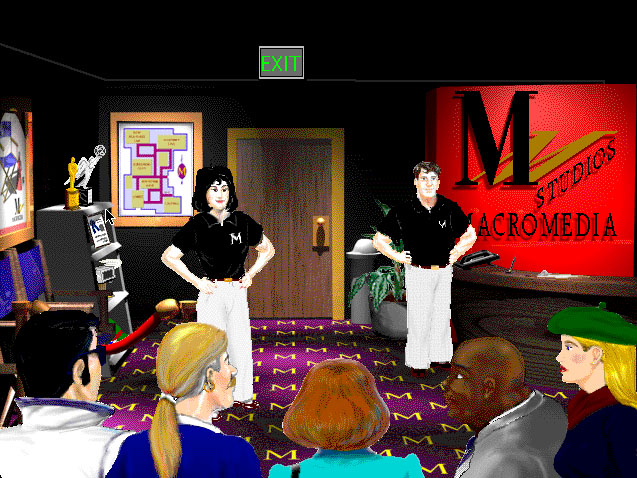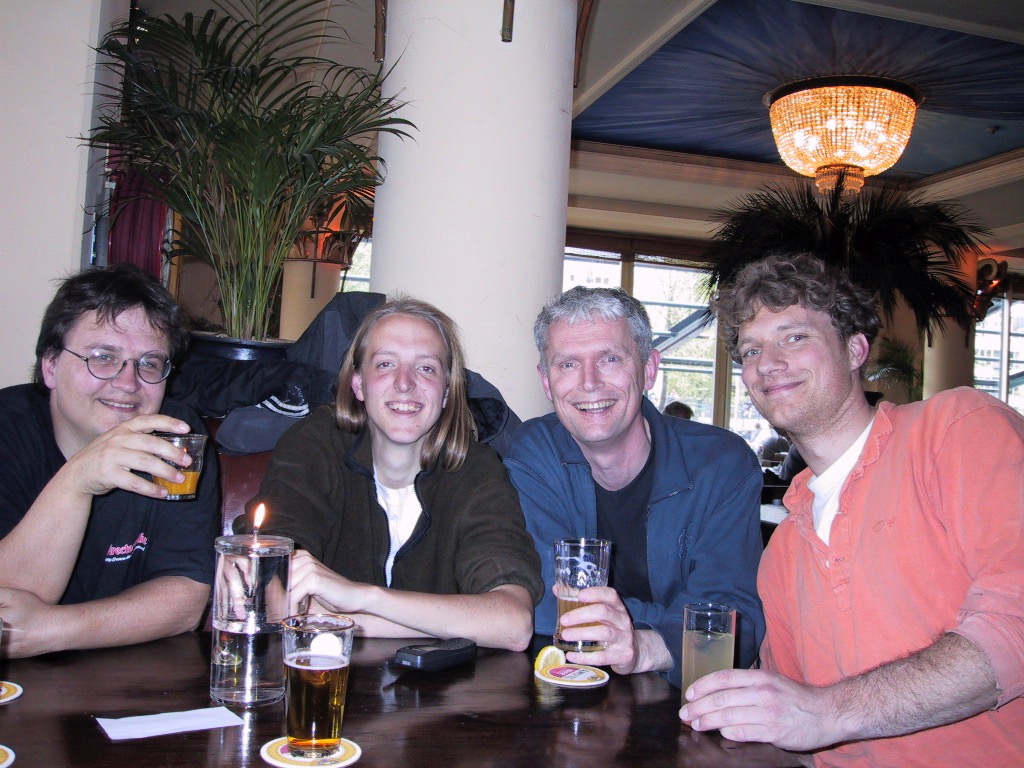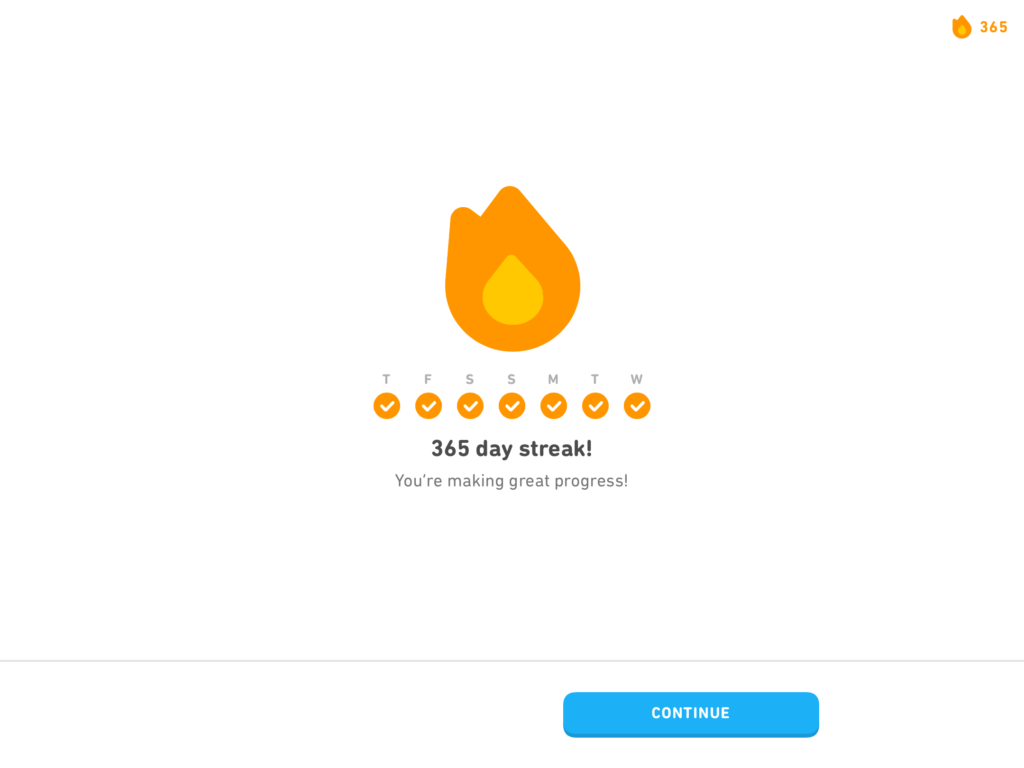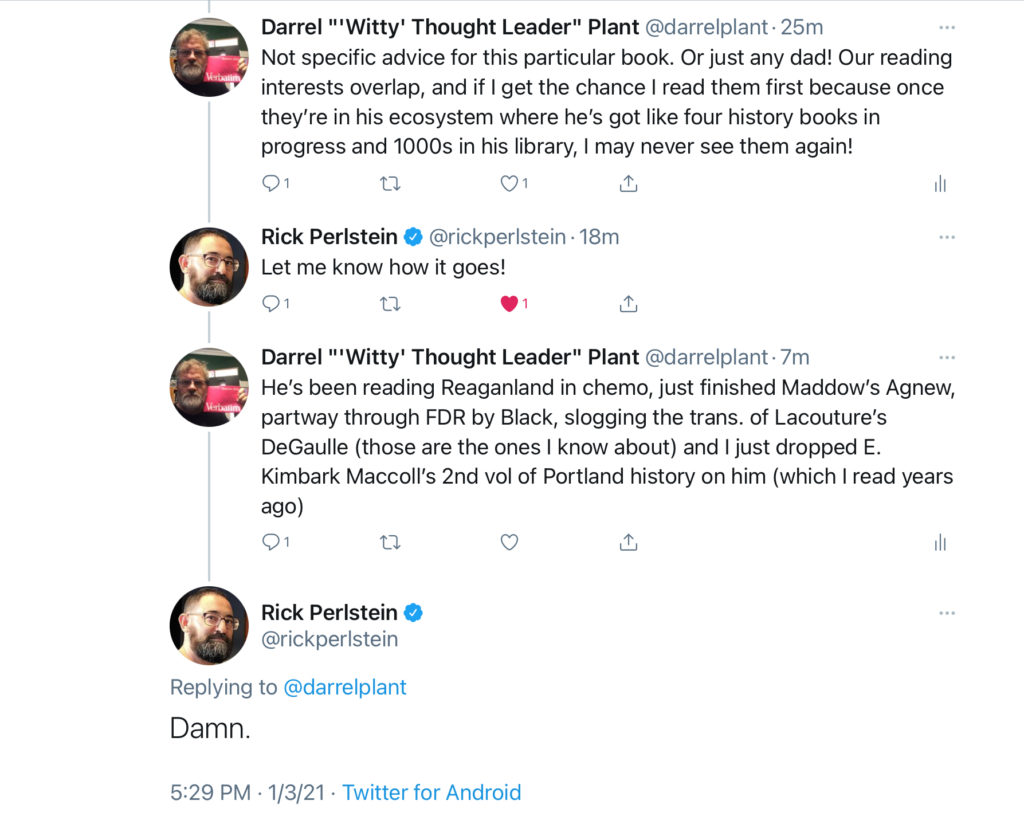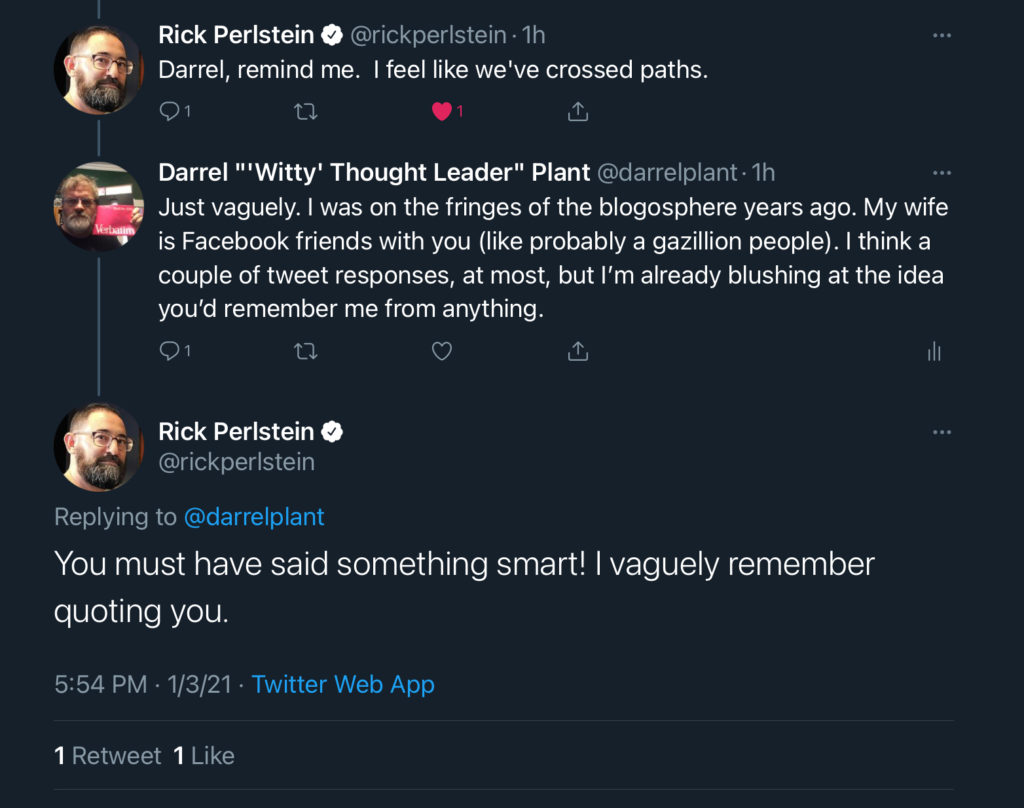I first referenced this image 14 years ago, when I wrote about the time anti-D&D Christians threatened to picket a talk I gave at the Springfield Public Library to a few tween-age boys about role-playing games, but back then the size of the images I was uploading was fairly small. Combined with the fact that what I had to scan was a sort of grainy newspaper photo from 1982, I didn’t really get into what exactly was on the table.
But I ran across the original print the other day sorting through some boxes and made a new scan, taking a closer look with my aging eyes at what was there.
On the far left of the table, nearest the podium, at the back is a Gamemaster’s Screen for the Champions RPG. The images of the items in front of it are too blown out for me to read, but they are presumably Champions rule books.
Next to that is a line of material for the Bushido RPG, in this case the boxed set that came out after the earlier zip-lock editions. In front of the box (standing) are a couple of the rulebooks, then what appears to be a copy of the supplement Valley of the Mists, which is presumably still in a box somewhere (I catalogued the digest-sized zip-loc Bushido in Just a Box of Games, Box 2. Central on the table is the map of Japan on the gamester’s screen (?) from Bushido that I picked because their graphics were quite good.
In front of the Bushido screen are several of the TRAVELLER books, with Book 1: Characters and Combat and Book 2: Starships, visible enough to sort of read.
Standing just to the right of the Bushido screen would be a couple of Advanced Dungeons & Dragons books, both from the first edition as that was state-of-the-art in 1982. The Monster Manual is clearly visible, and I believe the Dungeon Master’s Guide is in front of it (from what little I can see of the cover). Presumably, the kid on the right of the image is flipping through the Player’s Handbook, which logically should have occupied the rightmost corner of the table.
In front of the AD&D books is the rulebook for STARWEB, the flagship galactic conquest play-buy-mail game from Flying Buffalo. And in front of that is a rulebook for The Morrow Project, one of a number of post-nuclear holocaust survivalist RPGs that went for a grittier, more realistic aesthetic than, say, Gamma World.
I can’t make out what’s on the closest corner of the table, but I’m pretty sure it was a printout from my own play-by-mail game, whose cover is just behind it: GANGLORD, a game of gang warfare in The Big City, where you directed individual members of your gang on missions of robbery, extortion, and territory expansion. My long-term plan—if I’d ever gotten past the point where I had only about 40 players, we were seriously under-capitalized— was for the most successful gangs to become organized criminal syndicates (MOBRULES) and then political parties (POLITICO, yeah, I would have sued their asses when they came along twenty years later), in a trio of interrelated power politics games.
Special thanks to the reporter from the Springfield newspaper who provided me with a copy of this image nearly 40 years ago. I will find your name somewhere.
